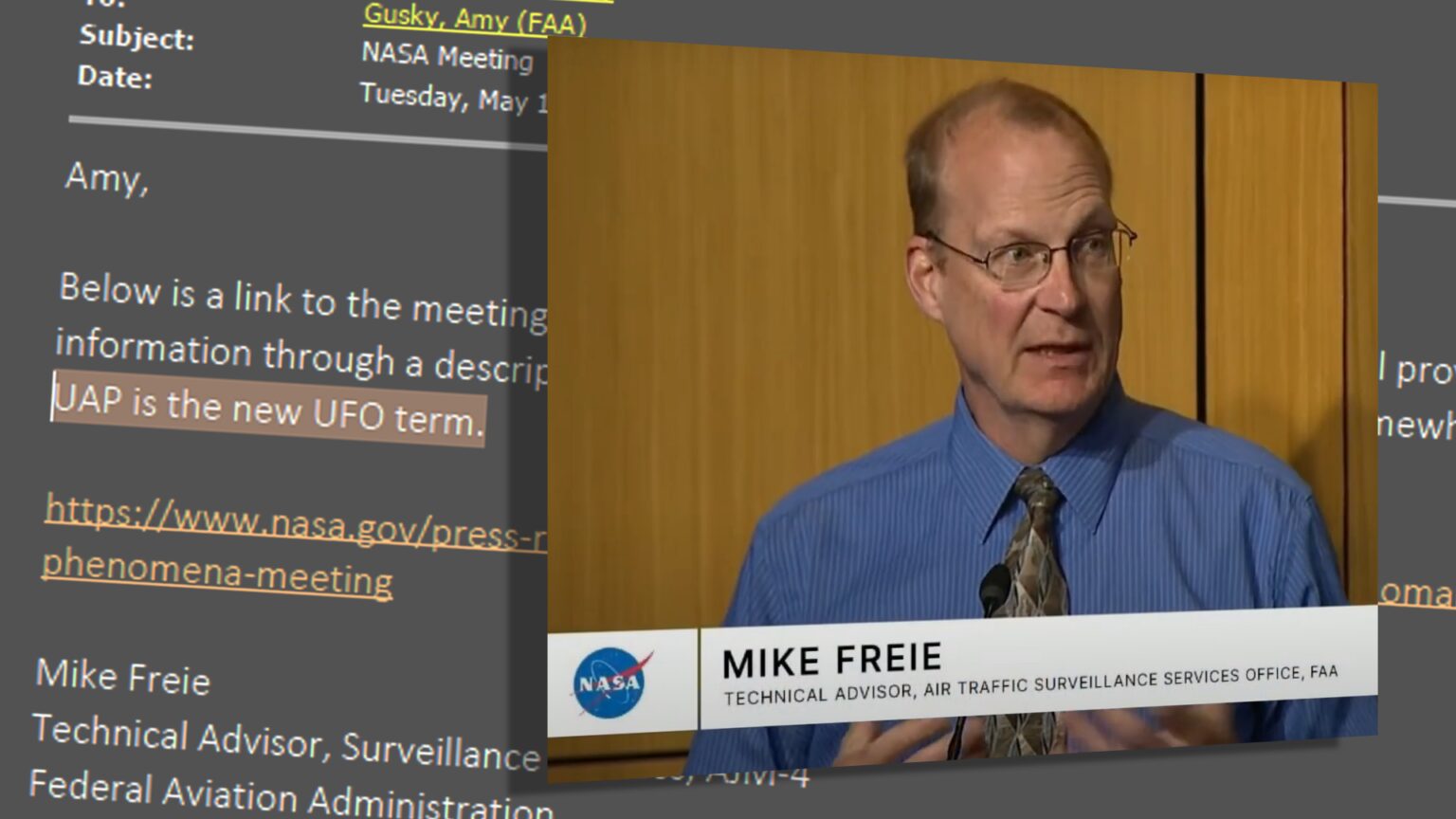In response to a Freedom of Information Act (FOIA) request filed in May 2023 by The Black Vault, the Federal Aviation Administration (FAA) has released 129 pages of documents concerning emails sent to and from Michael Freie, a technical advisor in the FAA’s Air Traffic Surveillance Services Office.
The request, FOIA case 2024-04951, sought communications containing keywords such as “Unidentified Aerial,” “Unidentified Flying,” “UAP,” “UFO,” and related terms.
The FOIA request stemmed from Mr. Freie’s involvement as a speaker at NASA’s Public UAP Meeting held on May 31, 2023. Known for his expertise in air traffic surveillance, Freie has served as a critical figure within the FAA, providing insights into the systems monitoring U.S. airspace and their limitations. During the meeting, he delivered a detailed explanation of how the FAA monitors civilian airspace and the ongoing challenges in identifying and tracking objects that deviate from typical flight behaviors.
Among the released documents, several emails stand out for their direct relevance to UAP discussions. In an email exchange dated February 13, 2023, Freie referenced radar adjustments made by the Department of Defense (DoD), which could explain increased detections of slow-moving aerial objects. “Most tracking filters eliminate plots for targets below 40 or 60 knots airspeed… Obviously they adjusted those minimum speed thresholds,” he wrote. This adjustment followed the highly publicized detection of Chinese surveillance balloons earlier that year and coincided with a broader governmental focus on aerial object tracking.

The Chinese balloon incidents, which began with a reported sighting in late January 2023, triggered a heightened focus on aerial surveillance. Freie’s emails reveal how the FAA adapted to the situation. He discussed how adjustments to radar tracking thresholds were likely responsible for an uptick in the detection of unidentified objects, noting that these changes allowed for the tracking of slow-moving targets previously filtered out as irrelevant. “Additional awareness of these objects is due to adjusted tracking filters,” he stated in one email.
Other emails illustrate Freie’s views on interagency collaboration. In one exchange with Amy Gusky, Acting Director of Surveillance Services, Freie emphasized that the Department of Defense should act as the primary spokesperson for national defense issues. He noted, “I suggest DoD needs to be the primary spokesperson for National defense because that mission is theirs.”
A recurring theme in Freie’s communications was the relationship between budget priorities and technological capabilities. In a February 13, 2023 email, he lamented the defunding of the SENSR (Spectrum Efficient National Surveillance Radar) program, a joint FAA-DoD initiative aimed at modernizing surveillance systems. He remarked that “programs like SENSR are needed to recapitalize primary surveillance radar necessary to support national defense programs.”
The FAA did withhold portions of the records under FOIA Exemptions 3, 5, and 6. Exemption 3 protects information classified under other federal statutes, including critical infrastructure security data. Exemption 5 protects pre-decisional materials to preserve the deliberative process, and Exemption 6 safeguards personal privacy.
The release provides a valuable look at how the FAA navigates its responsibilities regarding UAPs and national airspace surveillance. The Chinese balloon incidents serve as a backdrop to the growing challenges faced by the FAA in maintaining effective surveillance and addressing public concerns.
###
Document Archive
 FOIA Case 2024-04951 Release Package [131 Pages, 6MB]
FOIA Case 2024-04951 Release Package [131 Pages, 6MB]
 Loading...
Loading...Follow The Black Vault on Social Media:


